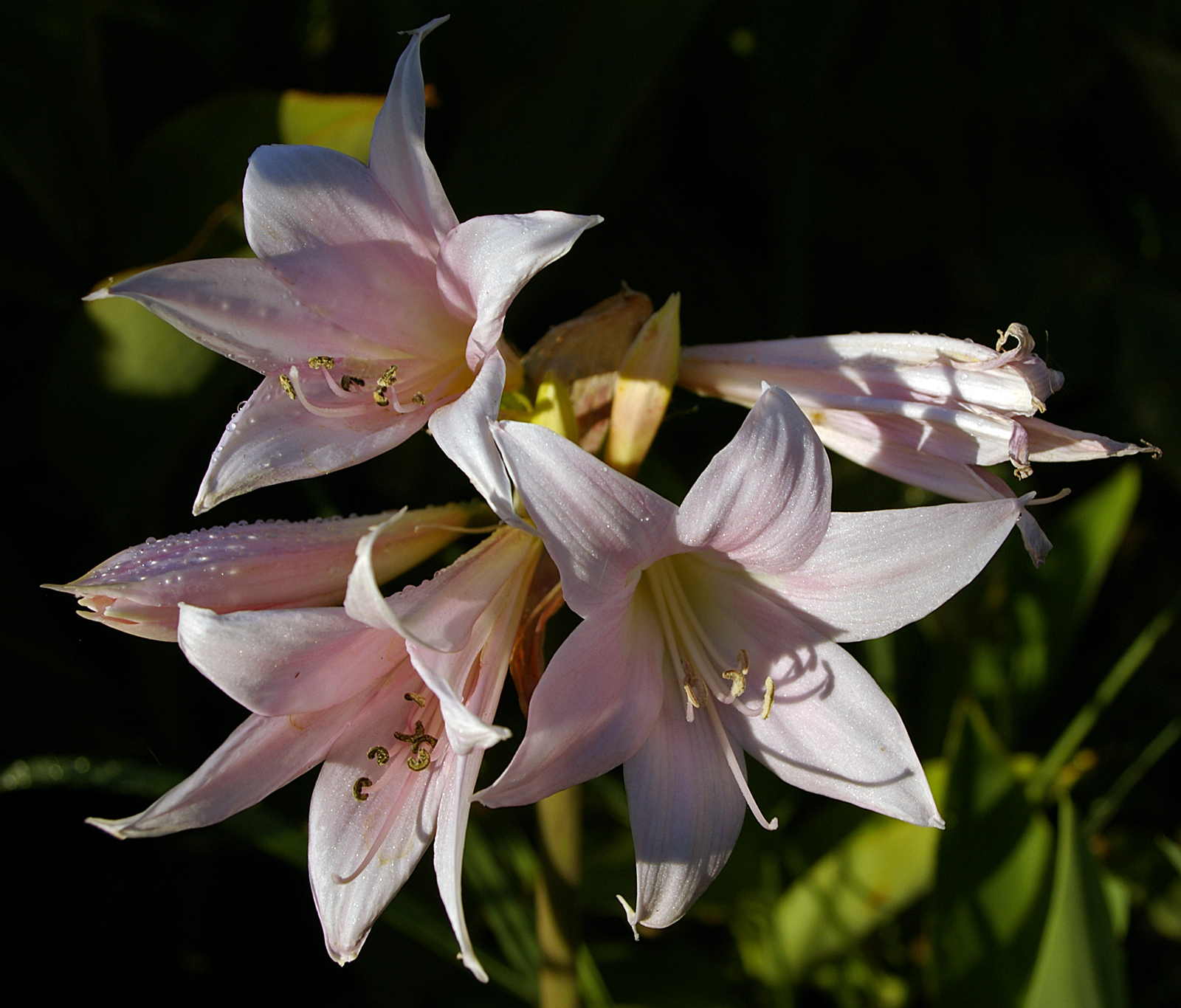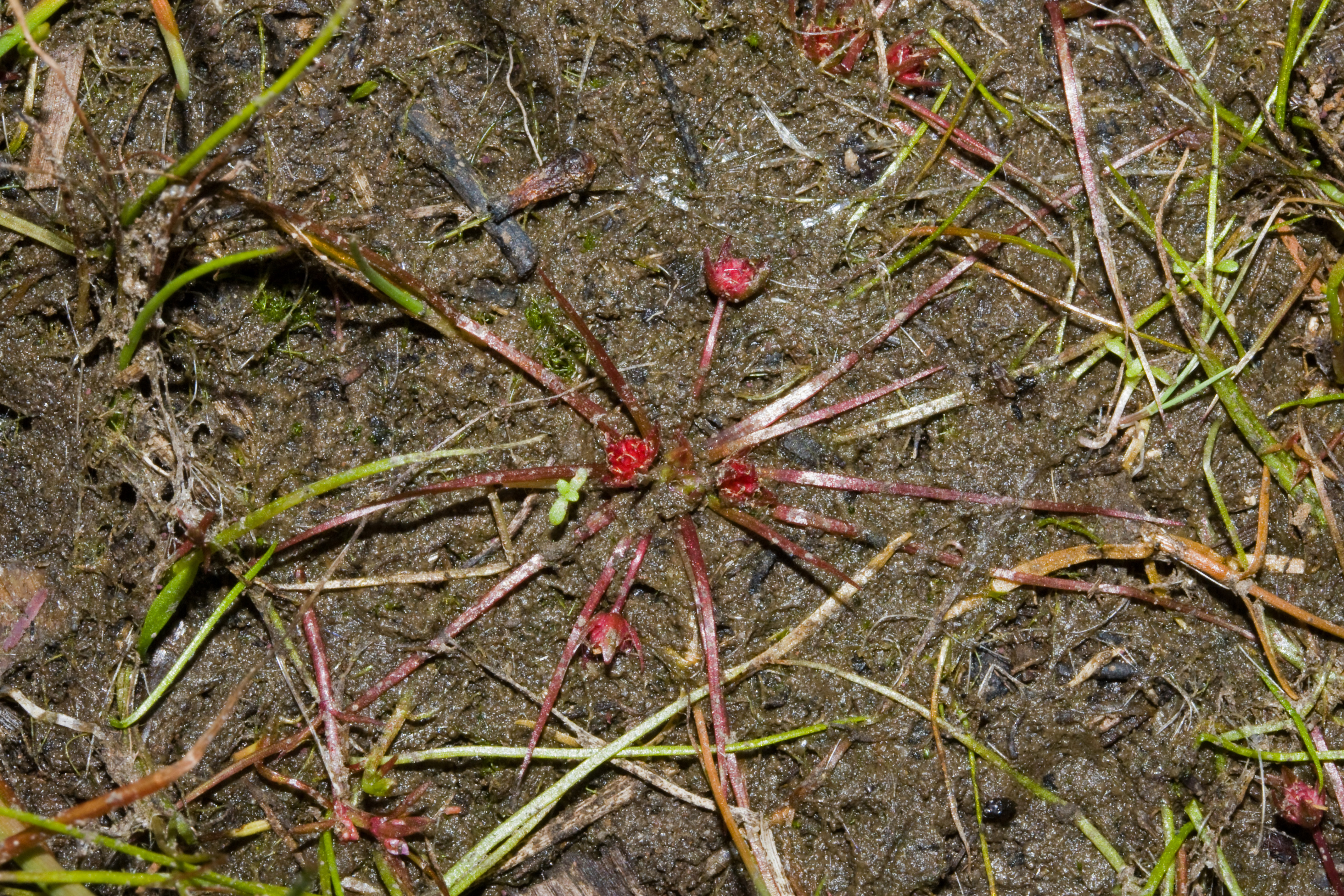|
Staminate
The stamen (plural ''stamina'' or ''stamens'') is the pollen-producing reproductive organ of a flower. Collectively the stamens form the androecium., p. 10 Morphology and terminology A stamen typically consists of a stalk called the filament and an anther which contains '' microsporangia''. Most commonly anthers are two-lobed and are attached to the filament either at the base or in the middle area of the anther. The sterile tissue between the lobes is called the connective, an extension of the filament containing conducting strands. It can be seen as an extension on the dorsal side of the anther. A pollen grain develops from a microspore in the microsporangium and contains the male gametophyte. The stamens in a flower are collectively called the androecium. The androecium can consist of as few as one-half stamen (i.e. a single locule) as in ''Canna'' species or as many as 3,482 stamens which have been counted in the saguaro (''Carnegiea gigantea''). The androecium in var ... [...More Info...] [...Related Items...] OR: [Wikipedia] [Google] [Baidu] |
Gynoecium
Gynoecium (; ) is most commonly used as a collective term for the parts of a flower that produce ovules and ultimately develop into the fruit and seeds. The gynoecium is the innermost whorl of a flower; it consists of (one or more) '' pistils'' and is typically surrounded by the pollen-producing reproductive organs, the stamens, collectively called the androecium. The gynoecium is often referred to as the " female" portion of the flower, although rather than directly producing female gametes (i.e. egg cells), the gynoecium produces megaspores, each of which develops into a female gametophyte which then produces egg cells. The term gynoecium is also used by botanists to refer to a cluster of archegonia and any associated modified leaves or stems present on a gametophyte shoot in mosses, liverworts, and hornworts. The corresponding terms for the male parts of those plants are clusters of antheridia within the androecium. Flowers that bear a gynoecium but no stamens are c ... [...More Info...] [...Related Items...] OR: [Wikipedia] [Google] [Baidu] |
Flower
A flower, sometimes known as a bloom or blossom, is the reproductive structure found in flowering plants (plants of the division Angiospermae). The biological function of a flower is to facilitate reproduction, usually by providing a mechanism for the union of sperm with eggs. Flowers may facilitate outcrossing (fusion of sperm and eggs from different individuals in a population) resulting from cross-pollination or allow selfing (fusion of sperm and egg from the same flower) when self-pollination occurs. There are two types of pollination: self-pollination and cross-pollination. Self-pollination occurs when the pollen from the anther is deposited on the stigma of the same flower, or another flower on the same plant. Cross-pollination is when pollen is transferred from the anther of one flower to the stigma of another flower on a different individual of the same species. Self-pollination happens in flowers where the stamen and carpel mature at the same time, and are positione ... [...More Info...] [...Related Items...] OR: [Wikipedia] [Google] [Baidu] |
Amaryllis Stamens Aka
''Amaryllis'' () is the only genus in the subtribe Amaryllidinae (tribe Amaryllideae). It is a small genus of flowering bulbs, with two species. The better known of the two, ''Amaryllis belladonna'', is a native of the Western Cape region of South Africa, particularly the rocky southwest area between the Olifants River Valley and Knysna. For many years there was confusion among botanists over the generic names ''Amaryllis'' and ''Hippeastrum'', one result of which is that the common name "amaryllis" is mainly used for cultivars of the genus '' Hippeastrum'', widely sold in the winter months for their ability to bloom indoors. Plants of the genus ''Amaryllis'' are known as belladonna lily, Jersey lily, naked lady, amarillo, Easter lily in Southern Australia or, in South Africa, March lily due to its propensity to flower around March. This is one of numerous genera with the common name "lily" due to their flower shape and growth habit. However, they are only distantly rel ... [...More Info...] [...Related Items...] OR: [Wikipedia] [Google] [Baidu] |
Hydatellaceae
Hydatellaceae are a family of small, aquatic flowering plants. The family consists of tiny, relatively simple plants occurring in Australasia and India. It was formerly considered to be related to the grasses and sedges (order Poales), but has been reassigned to the order Nymphaeales as a result of DNA and morphological analyses showing that it represents one of the earliest groups to split off in flowering-plant phylogeny, rather than having a close relationship to monocots, which it bears a superficial resemblance to due to convergent evolution. The family includes only the genus '' Trithuria'', which has at least 13 species, although species diversity in the family has probably been substantially underestimated. Description Plants are submerged and emergent aquatic plants, rooted in the substrate below the water. They are tiny plants, just a few cm tall. Most species are ephemeral aquatics that flower in vernal pools when the water draws down, but several species are submerg ... [...More Info...] [...Related Items...] OR: [Wikipedia] [Google] [Baidu] |
ἄνθος
{{wiktionary Antho- is a prefix derived from the Ancient Greek ἄνθος (anthos) meaning “flower”. It is found in words such as : * Anthomania, an obsession with flowers * Anthocyanins, a class of phenolic pigments found in plants * Anthodite, a type of cave formations composed of long needle-like crystals situated in clusters which radiate outward from a common base * Anthology * Anthotype, a photographic process using plant and flower material * Anthozoa, a class within the phylum Cnidaria that contains the sea anemones and corals * Anthomedusae (a.k.a. Anthoathecatae), an order of marine invertebrates * Anthocerotophyta, the hornworts, a division of non-vascular plants * Anthocoridae Anthocoridae is a family of bugs, commonly called minute pirate bugs or flower bugs. Worldwide there are 500-600 species. Description Anthocoridae are 1.5–5 mm long and have soft, elongated oval, flat bodies, often patterned in black an ..., the minute pirate bugs or flower bu ... [...More Info...] [...Related Items...] OR: [Wikipedia] [Google] [Baidu] |
Ancient Greek
Ancient Greek includes the forms of the Greek language used in ancient Greece and the ancient world from around 1500 BC to 300 BC. It is often roughly divided into the following periods: Mycenaean Greek (), Dark Ages (), the Archaic period (), and the Classical period (). Ancient Greek was the language of Homer and of fifth-century Athenian historians, playwrights, and philosophers. It has contributed many words to English vocabulary and has been a standard subject of study in educational institutions of the Western world since the Renaissance. This article primarily contains information about the Epic and Classical periods of the language. From the Hellenistic period (), Ancient Greek was followed by Koine Greek, which is regarded as a separate historical stage, although its earliest form closely resembles Attic Greek and its latest form approaches Medieval Greek. There were several regional dialects of Ancient Greek, of which Attic Greek developed into Koi ... [...More Info...] [...Related Items...] OR: [Wikipedia] [Google] [Baidu] |
Filum
The filum terminale ("terminal thread") is a delicate strand of fibrous tissue, about 20 cm in length, proceeding downward from the apex of the conus medullaris. It is one of the modifications of pia mater. It gives longitudinal support to the spinal cord and consists of two parts: * The upper part, or filum terminale internum, is about 15 cm long and reaches as far as the lower border of the second sacral vertebra. It is continuous above with the pia mater and contained within a tubular sheath of the dura mater. In addition, it is surrounded by the nerves forming the cauda equina, from which it can be easily recognized by its bluish-white color. * The lower part, or filum terminale externum, closely adheres to the dura mater. It extends downward from the apex of the tubular sheath and is attached to the back of the first segment of the coccyx in a structure sometimes referred to as the ''coccygeal ligament''. The most inferior of the spinal nerves, the coccygeal ... [...More Info...] [...Related Items...] OR: [Wikipedia] [Google] [Baidu] |
Classical Latin
Classical Latin is the form of Literary Latin recognized as a literary standard by writers of the late Roman Republic and early Roman Empire. It was used from 75 BC to the 3rd century AD, when it developed into Late Latin. In some later periods, it was regarded as good or proper Latin, with following versions viewed as debased, degenerate, or corrupted. The word ''Latin'' is now understood by default to mean "Classical Latin"; for example, modern Latin textbooks almost exclusively teach Classical Latin. Cicero and his contemporaries of the late republic referred to the Latin language, in contrast to other languages such as Greek, as or . They distinguished the common vernacular, however, as Vulgar Latin (''sermo vulgaris'' and ''sermo vulgi''), in contrast to the higher register that they called , sometimes translated as "Latinity". ''Latinitas'' was also called ("speech of the good families"), ''sermo urbanus'' ("speech of the city"), and in rare cases ''sermo nobilis' ... [...More Info...] [...Related Items...] OR: [Wikipedia] [Google] [Baidu] |





